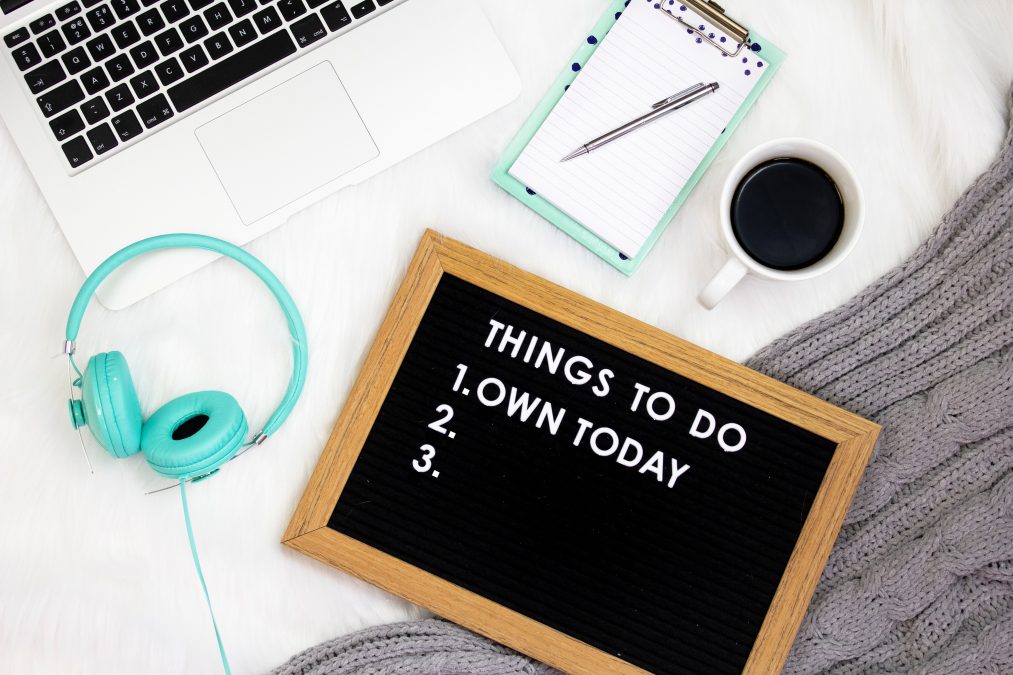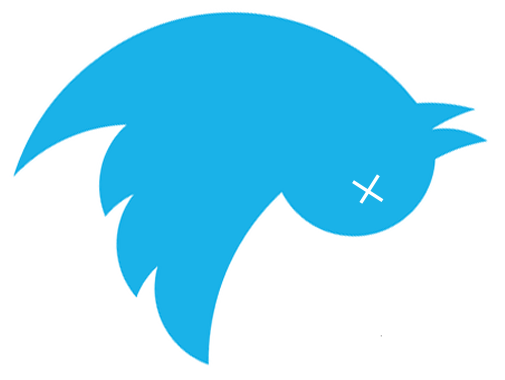
How a Religious Television Network Successfully Used a Predictive Text Meme
February 26, 2020
Sheltering in Place: Healthy Ways to Deal with Anxiety and Isolation
March 26, 2020The Coronavirus and Transitioning Into Work from Home Life
The World Health Organization has just declared the coronavirus disease 2019 (COVID-19) a global pandemic. And it’s a little scary, and that’s mainly because of how the American federal government is responding (hint: not very well).
So as many businesses and events are shutting down, you may have to work from home (WFH). Online and offline, many people are offering tips about how to transition as we’re trying to implement more social distancing. And I’m here to give my two cents of advice, too.
But first of all, I want to say flat out that it will be a transition, but you can do it!
I’ve worked from home starting in 2007 when I had knee surgery, back when remote work isn’t as popular as it is now. That was for two weeks where I had to be on crutches.
And, I admit it was strange.
I lived with three other young women. In the morning, they all would go to work or school for the day. And then, I was left with myself. I called myself “the cat lady without any cats.” because I didn’t leave the house except to go to physical therapy for two weeks. There were times I enjoyed the solitude, but after my knee was stable enough for walking, I was happy to go back to work because it was weird to be by myself for 8 hours a day.
Fast forward to now and I’m a freelancer/business owner who has steadily worked home, except for a couple of years, since 2012. I’m very used to working by myself and not talking to people except through social media or the occasional client or sales call.
But for a lot of you, this may be emotionally taxing, so it’s important to take care of yourself.
So let me start off with this bit of advice.
Figure Out What Works for You
There’s a lot of information on how to make WFH life work for you already. I am not a WFH guru even though I’ve done it for years. I’m no expert on telling you on what to eat, how to set up your space, when to take breaks, or any of that stuff.
But here’s a round-up to get you started.
- Here’s the top result from a Google search from PCMag.
- Here’s another from HubSpot.
- And another from Vogue.
- And yet another from The New York Times.
- There is the #WorkFromHome and #RemoteWork hashtags on Twitter.
- There’s this ongoing thread from a friend of mine about making food while under possible quarantine.
- NBC News has some tips for eating health while you work from home.
- Entrepreneur offers ideas of how to remain healthy while you WFH.
You are definitely spoiled for choice when it comes to the sheer amount of information out there about telecommuting. So read up on this topic and follow your intuition about what may or may not work for you.
Some Work from Home Technical Considerations
One thing I want to highlight: you need to give yourself time to set up your computer for work. And I don’t mean don’t have Facebook or other social media apps on it. I mean your company’s virtual private network (VPN) and how you’ll access your files and documents. That part will take longer than you think, especially if you have never accessed the VPN, or any sort VPN before.
The VPN is basically how you’ll connect to your company’s servers and possibly your own computer. You’ll want to know who your IT contact person is so they can help you with any snags you encounter. Do not be afraid to ask a lot of questions about the technical side of things. Also read this article from Slate about how to keep your computer safe while working from home.
Also, just one other thing: videoconferencing. If you’re familiar with FaceTime, videoconferencing is similar. And this may be the method of how you conduct your meetings for a while and it’s strange for so many reasons. I never thought myself to be vain until I saw myself in a Zoom video conference. But eventually you’ll get used to it. But again, whether you use Zoom or Skype or Teams, ask your IT folks for help with that, too.
Life As a Freelancer Who Works from Home Now
I love working from home and I’m sure that’s because I lean towards being an introvert. I’m fine with being at home by myself. I enjoy the peace and quiet as well as the freedom of shaping my own schedule. Most people are actually ambiverts, a balance of introverts and extroverts. But going into a more hermetic lifestyle can take some adjustment.
The way I work from home works for me, but it goes against the grain of what a lot of people do.
- I work in my bedroom most of the time. The conventional wisdom is that you should have a dedicated space, even if it’s your kitchen table, to work. I don’t really like doing that. I’m either working while in my office chair or in bed, and I have always worked like that since I was in college. Having a laptop make this a lot easier to work anywhere. I remember reading Mindy Kaling’s memoir, Is Everyone Hanging Out Without Me? (And Other Concerns), and she showed a picture of herself writing in bed. A woman after my own heart in that regard! Mindy and I are probably the only one who do this. I won’t tell you to do it, but I won’t tell you to not do it.
- I don’t have a fixed schedule. Granted, this is a perk of being a business owner. If you work a 9 to 5, this may be more difficult to pull off. But you can wiggle in a lot more flexibility with your schedule, including for naps and tidying up the place and all the other things you probably think you’d be tempted to do. You’re probably still going to be more productive than you are in the office (unless you have little kids or pets around…then that’s a whole other conversation. Buffer has great tips for working from home with kids around.)

Interruptions happen!
But not having a fixed schedule doesn’t mean work isn’t accomplished. I’m a writer which means I have deadlines. So the work has to get done. And this doesn’t mean I drop everything for an email that comes after business hours, either. I have boundaries within my flexibility.
- I have social media open a lot. Twitter is my digital companion as a writer, and some of the business networking I do is on Facebook. I’m not really a purist about having no social media distractions. In fact, having Twitter open a lot and seeing all the threads about working from home inspired me to write my own post here. It’s a great way to understand my audience as well as to keep tabs on what’s going on in the world in real-time.
- I didn’t wear normal clothes for the longest time. So until recently, I wore mainly leggings, sweatpants, and t-shirts for my normal day-to-day wear at home. I definitely dressed for comfort. But then I started having some video calls with clients and then decided that it’s probably best that I’m not wearing that t-shirt from my volunteer excursion from 2006 for that video conference. So it is a good idea to wear at least something you’d be OK with meeting up a colleague for coffee in during your work week. So maybe something a little under business casual but not completely casual, like a decent shirt and pants or skirt.
- Most of the time, I work in silence. I can’t work with the TV on, and most of time, not even with music. Right now, I hear birds chirping outside, my laptop’s fan, and my typing. But a lot of people need that background white noise and may keep the TV low or listen to music all day or have some other app they use to create coffee shop chatter, for example.
- I do stretch my legs and go outside every day. I may be a bit of a hermit, but the home I live in now has some lovely flowers and greenery, like these lovely orchid flowers.

Flowers from a purple orchid tree at my house
So rain or shine, I try to go outside for a few minutes. That helps with any feelings of cabin fever. I can’t work outside (too distracting), but it’s nice to feel a little terra firma that isn’t carpet or tile.
Apps I Use As I Work from Home
So although I’m not using a walking desk treadmill or standing desk, there are times I need to track and promote. So here are some free apps I use as I work from home.
- RescueTime — This freemium app tracks your computer activity, which is mainly what I use it
- TopTracker — For projects charged by the hour, this is an awesome free app. You can track your time per project and receive periodic check-in nudges. You can also invoice from it.
- Brain.fm — If I really need to focus, I’ll use this app for functional music. It’s similar to Focus @ Will.
- Water Drink Reminder — This is an Android app that helps me track how much water I’m drinking (it’s good for in the office, too). It can also double as a way to remind yourself to get up and stretch ever once in a while or go for a walk.
Boundaries, Boundaries, Boundaries
The work from home lifestyle does require to have good boundaries because it can be so easy to get lost in time. Especially if you are hourly, make sure to cruise on in at your normal time and leave at your normal time. Make sure you take your lunch break and other breaks.
Your boss may start to be really concerned about your productivity and email or message you all the time. Feel free to kindly push back on that, since it can and will hinder your productivity. Work with them about when they should check in. Maybe offer a weekly check-in call or email to keep your manager abreast of what you’re working on (and I believe that’s a good idea to bring back into the office).
If you’re the manager, check in on your direct reports to see how they are faring with the transition from the office to work from home — both work wise and emotionally. Offer supports that your company may have. Offer your own support, too. Your human touch can help with productivity and it will help you seem less like just a boss and more like a human being who is also going through a stressful time.
Keep Connected While You’re Off the Clock

Photo by Matt Nelson on Unsplash
As you give yourself time to figure out what methods help you keep track of your work, there’s the reality of life at home off the clock, too. The social distancing we have to do to protect the elderly and the immunosuppressed/immunocompromised is of utmost importance so this disease doesn’t overwhelm our already tenuously held together healthcare system.
But that means we will have to temporarily sacrifice a big chunk of who we are as a species. Being cooped up indoors can be challenging for most of us.
We are social beings and loneliness is already a rampant problem in the United States. This is not akin to social isolation (this twitter thread does a good job of deciphering between the two). In fact, people who are already socially isolated will feel the negative effects of social distancing even more.
So how can we keep in touch with each other without going stir crazy in our own homes? I have a few suggestions that may help.
Five Tips to Keep Connected During This Coronavirus Outbreak
- Get connected with yourself. Social distancing has given us the luxury of time. And maybe it’s time to enjoy your own company again. So what hobbies, interests, or tasks are on your to-do list that you just don’t have enough time for. Is there a book you’ve been dying to read? An art project you have yet to start? A meditation practice you haven’t had time for? Something that needs to be fixed around the house? A conversation with a loved one that you’ve been avoiding? A Netflix or Hulu show you haven’t had time to binge? Some other craft project? You now have the time and space for those things you’ve been neglecting which can help your overall wellbeing.
- Get reconnected with your family. On social media, I read about this person that said they would rather be stuck on a cruise because at least they’d be having fun and wouldn’t be stuck in the house with their annoying family. Eep! Not sure if being on a cruise ship right now is the most ideal. But if you’ve been a busy bee at work or school and you don’t find your family annoying or toxic, this would be a great time to reacquaint yourselves with each other. Whether it’s through board games, meals together, house chores or projects, or just hanging out — it doesn’t have to be anything deep or special. It just has to be quality time.
- Reconnect with your friends and other loved ones. You may have gotten into a cycle of busyness with work, family, and other obligations. But now, we have more free time. Remember those friends you’ve been too busy to get in touch with? Now you have time. This will help you and your friends feel less isolated as more and more businesses and events shut down. Friendships are of utmost importance to your health, too — so make the time to reach out to them via phone, email, video, or text. Other ideas for virtual hangouts: virtual coffee dates, watch movies or TV shows together, create a book club.
- Reach out for support. I’ll admit that my own anxiety levels have been higher, and I’m sure yours have been, too. But if you find that anxiety, depression, or any other sort of mental health issue has become more of an intrusion or burden in your life, do not hesitate to reach out for help. It may be best not to go into a mental health therapist’s office for the next few weeks. But teletherapy has taken off in recent years — where you speak to a therapist by phone, video call, or text. Psychology Today has an online therapist listing that you can use to find your next therapist or counselor. If you already have a therapist or are looking for a therapist, check in with them to see what you can arrange.
- Look out for each other. With so many businesses and events shutting down and laying people off, a lot of us are more vulnerable than ever now. It’s a scary time, mainly because we don’t know how many of us are carrying or are suffering from this outbreak. Including the elderly and those who have compromised or suppressed immune systems, we need to be looking out for each other. Social distancing is one key way to do that so that the healthy among us can prevent from becoming vectors of this disease and spreading it to others. But in the interim, check in with your elderly neighbors to see if you can help them with food and medications. I read about an elderly couple afraid to walk into a grocery store. They waited for about 30-45 minutes before asking a young woman to buy groceries for them. Let’s try to prevent those stories from happening by being more proactive in helping each other.
Final Thoughts
We all may be living and working life in the great indoors for a while, so this is a new normal that we’ll have to get used to for a while to ensure we “flatten the curve” of this pandemic. Working from home may be weird or inconvenient for some, but most likely it will be temporary.
But my ultimate hope is that more people will work from home. This could considerably cut down on greenhouses gases from commuting while offering flexibility to people with young children, disabilities, or other needs that make going into an office 40 hours a week more of a burden than a benefit. Making work more accessible for more people can be a great boon to our economy and our overall wellbeing as a nation.
Interested in working with me on creating some captivating content for your business? Hit me up today and let’s chat.




1 Comment
[…] ? Want to know how to better mentally survive working from home if it’s new to you? Check out this from Deborah Beckwin. https://deborahbeckwin.com/so-you-have-to-work-from-home-heres-my-experience/ […]